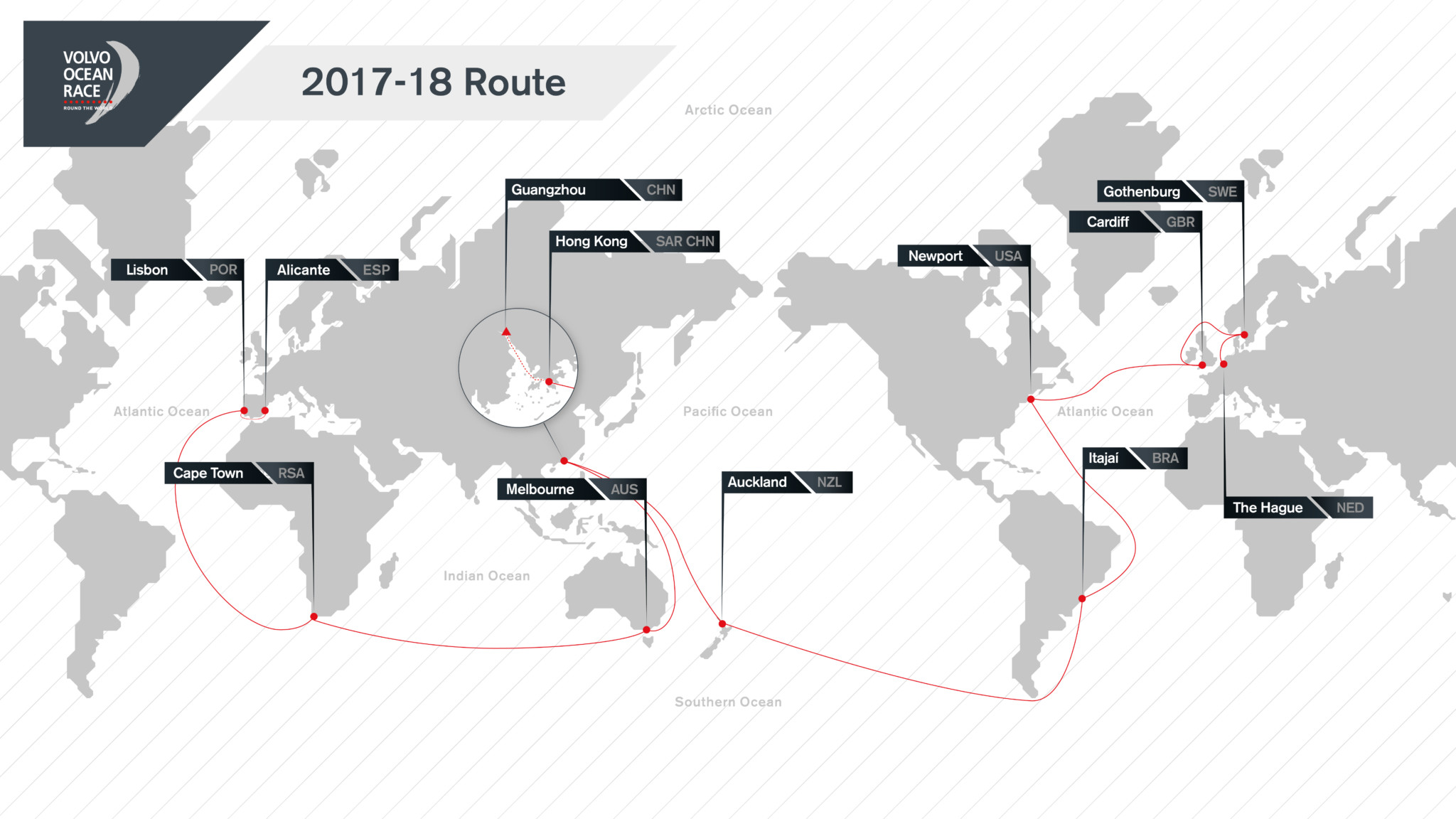No immunity from human impact
Published on May 17th, 2018
While the teams compete in the 2017-18 Volvo Ocean Race, their course around the planet is helping scientists learn about the prevalence of plastics in the oceans. And what is being learned is not great news.
The measurements were collected on the 6623nm leg, the longest in the race, from Auckland, NZL to Itajaí, BRA on both the Turn the Tide on Plastic and AkzoNobel boats.
The findings show that close to Point Nemo in the South Pacific Ocean, known as the furthest point from land on Earth, and in a region hoped to have been immune to human impact, there were between nine and 26 particles of microplastic per cubic metre.
Levels of 45 particles per cubic metre were recorded 452km from Auckland, 57 particles per cubic metre were found as the boats sailed close to Cape Horn, off the tip of South America, and only 12 particles per cubic metre were found 1000 km from the finish in Itajaí. The difference in measurements could be explained by ocean currents carrying the microplastics great distances.
The highest levels of microplastic found so far in the race, 357 particles per cubic metre, were found in a sample taken in the South China Sea, east of Taiwan, an area that feeds into the Great Pacific Ocean Gyre.
Dr. Sören Gutekunst of GEOMAR Institute for Ocean Research Kiel, funded by the Cluster of Excellence Future Ocean, analysed the preliminary microplastics data at the laboratory in Kiel, Germany.
“This is the first ever data that the scientific community has been able to analyse from a relatively inaccessible part of our blue planet,” reports Gutekunst. “Unfortunately, it shows how far and wide microplastics have penetrated our vast oceans and that they are now present in what, until now, many have considered to be untouched, pristine waters.”
Microplastics are often invisible to the naked eye and can take thousands of years to degrade. By collecting information on their levels, the mission is helping scientists gain insight into the scale of plastic pollution and its impact upon marine life.
The boats also collect other oceanographic data measurements including temperature, CO2, salinity, algae content which gives an indication of levels of ocean acidification.
Anne-Cecile Turner, Sustainability Programme Leader for the Volvo Ocean Race, added: “Such information is extremely valuable as it helps fill in the large gaps in our understanding of how plastic breaks down over a number of years and is spread to the ends of the earth by ocean currents.
“It’s also a stark reminder of the pressing need to tackle this plastic crisis head on and governments, businesses and individuals all have a role to play in addressing the problem.”
Point Nemo is so far from land that the nearest humans are often astronauts on the International Space Station, which orbits the Earth at a maximum of 258 miles (416km). Meanwhile the nearest inhabited landmass to Point Nemo is over 1,670 miles (2,700km) away.
Jeremy Pochman, Co-Founder and Strategic Director, 11th Hour Racing, Founding Principal Partner of the Volvo Ocean Race Sustainability Programme, said: “For so long, we have treated the oceans as an inexhaustible resource.
“The data we find here from onboard the boats show that microplastics are found in the most remote places on Earth, a clear sign that all our oceans are under great pressure.”
The Volvo Ocean Race teams are preparing for the In-Port Race on May 19 and Leg 9 to start May 20, which will take the fleet across the Atlantic Ocean from Newport, USA to Cardiff, UK.
Race details – Tracker – Scoreboard – Race route – Facebook – YouTube
Overall Results (after 8 of 11 legs)
1. MAPFRE (ESP), Xabi Fernández (ESP), 53 points
2. Dongfeng Race Team (CHN), Charles Caudrelier (FRA), 50
3. Team Brunel (NED), Bouwe Bekking (NED), 42
4. Team AkzoNobel (NED), Simeon Tienpont (NED), 36
5. Vestas 11th Hour Racing (DEN/USA), Charlie Enright (USA), 28
6. Team Sun Hung Kai/Scallywag (HKG), David Witt (AUS), 27
7. Turn the Tide on Plastic (POR), Dee Caffari (GBR), 22
2017-18 Edition: Entered Teams – Skippers
• Team AkzoNobel (NED), Simeon Tienpont (NED)
• Dongfeng Race Team (CHN), Charles Caudrelier (FRA)
• MAPFRE (ESP), Xabi Fernández (ESP)
• Vestas 11th Hour Racing (DEN/USA), Charlie Enright (USA)
• Team Sun Hung Kai/Scallywag (HKG), David Witt (AUS)
• Turn the Tide on Plastic (POR), Dee Caffari (GBR)
• Team Brunel (NED), Bouwe Bekking (NED)
Background: Racing the one design Volvo Ocean 65, the 2017-18 Volvo Ocean Race begins in Alicante, Spain on October 22 2017 with the final finish in The Hague, Netherlands on June 30 2018. In total, the 11-leg race will visit 12 cities in six continents: Alicante, Lisbon, Cape Town, Melbourne, Hong Kong, Guangzhou, Auckland, Itajaí, Newport, Cardiff, Gothenburg, and The Hague. A maximum of eight teams will compete.
Source: Volvo Ocean Race










 We’ll keep your information safe.
We’ll keep your information safe.